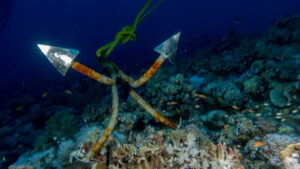Norwest drilling looks to uncover IAC rare earths prize at Arunta West

Norwest’s drilling is testing for much sought after IAC-hosted rare earths. Pic via Getty Images.
Drilling to test for the presence of highly valued ionic adsorption clay-hosted rare earth elements is now underway at Norwest’s Arunta West project in Western Australia.
The 23 hole aircore program, which includes the redrilling of three holes that intersected highly enriched REE paleochannel clays in 2015, follows on soil sampling that confirmed the widespread nature of REE enrichment within the project.
Norwest Minerals’ (ASX:NWM) drill program targets REE in shallow Cenozoic clays that are thought to be associated with a covered paleodrainage network.
All high tenor REE clay samples will undergo REE recovery testing to determine if they classify as ionic adsorption clays (IAC) as they have some very real advantages over their hard rock counterparts.
These include a typically higher proportion of valuable magnet earths along with the ease (and low cost) of exploration, mining and processing that can more than offset lower grades.
Drilling is expected to take up to seven days to complete with assays and recovery results to be reported in the next quarter.
Arunta West rare earths
The company noted that little is known about the clay-hosted REE enrichment at Arunta West, which is located about 600km west of Alice Springs near the border between Western Australia and the Northern Territory.
It added that the geologic setting suggests the REEs were released into solution from the weathering granite parent rock with the soluble REEs migrating tens of kilometres south through the sediment cover package.
These REEs attached onto the paleo clay surfaces via ion exchange to form IACs.
Maiden drilling at the project has already returned multiple, near-surface +1,000ppm total rare earth oxide (TREO) intercepts
This article was developed in collaboration with Norwest Minerals, a Stockhead advertiser at the time of publishing.
This article does not constitute financial product advice. You should consider obtaining independent advice before making any financial decisions.
Related Topics

UNLOCK INSIGHTS
Discover the untold stories of emerging ASX stocks.
Daily news and expert analysis, it's free to subscribe.
By proceeding, you confirm you understand that we handle personal information in accordance with our Privacy Policy.








